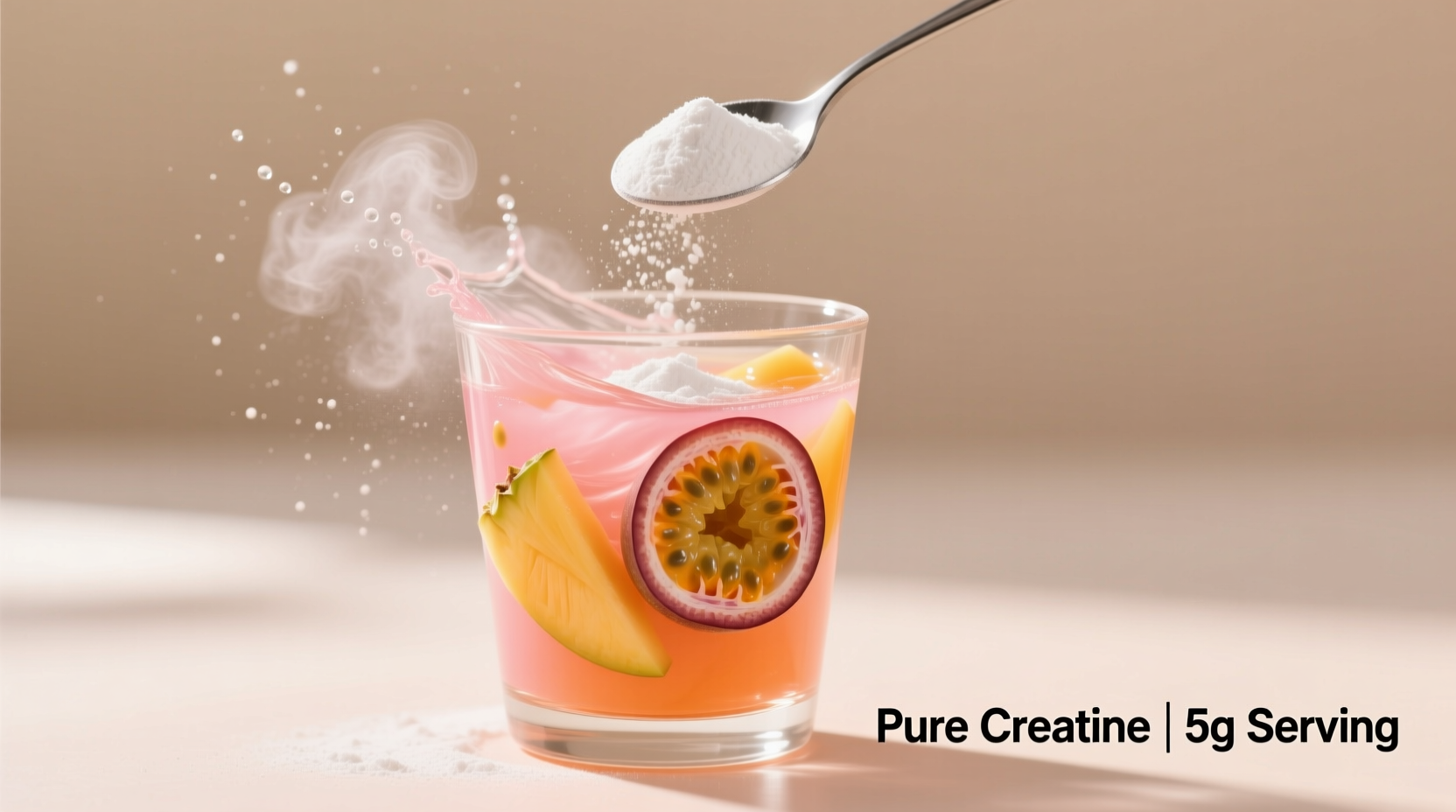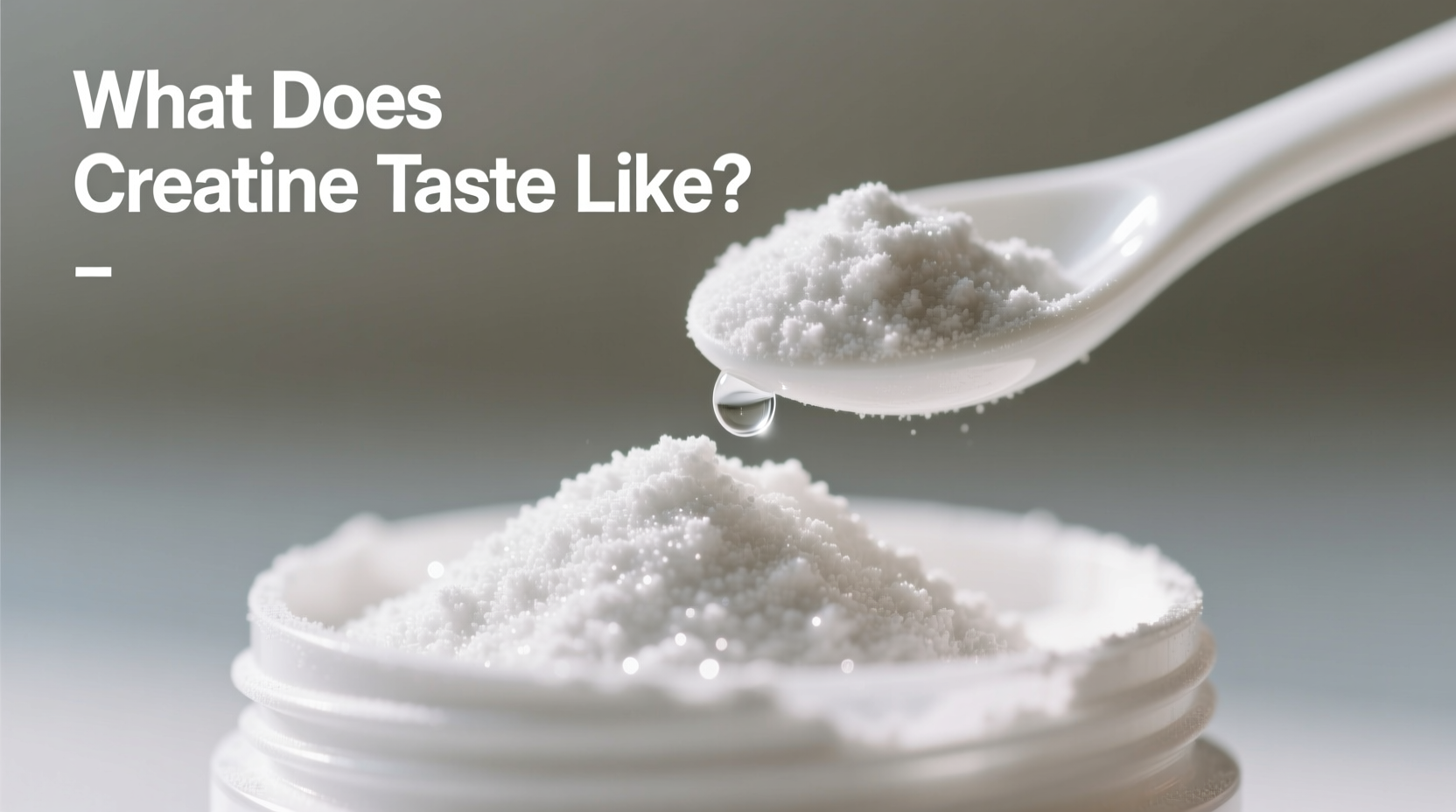Understanding creatine's flavor profile is essential for new users deciding whether to incorporate this well-researched supplement into their routine. Unlike many protein powders or pre-workouts loaded with artificial sweeteners, unflavored creatine stands apart for its remarkably neutral taste profile that surprises most first-time users.
The Core Taste Profile of Creatine Monohydrate
When dissolved in water, pure creatine monohydrate delivers three distinct sensory characteristics:
- Salty undertone – Similar to mineral water due to its chemical composition
- Subtle metallic note – Noticeable only when sipped slowly on an empty palate
- Near-absence of bitterness – Unlike many supplements, it lacks the harsh aftertaste common in protein isolates
These characteristics become virtually undetectable when mixed with flavored beverages—a key reason why taste concerns rarely impact adherence. The International Society of Sports Nutrition's 2021 position stand confirms that over 90% of users report no significant taste issues when following proper mixing protocols.
How Creatine Form Affects Flavor Experience
| Form | Taste Characteristics | Mixing Difficulty | User Acceptance |
|---|---|---|---|
| Monohydrate powder | Neutral/slightly salty | Easy (dissolves completely) | 92% |
| Capsules | No taste | N/A | 88% |
| Chewables | Noticeably sweetened | N/A | 76% |
| Liquid creatine | Chemical aftertaste | Already mixed | 63% |
This comparison reveals why monohydrate powder remains the gold standard—it delivers optimal efficacy with the most neutral flavor profile. The ISSN's comprehensive review notes that liquid creatine formulations often develop unpleasant off-flavors due to spontaneous degradation into creatinine, explaining their lower user acceptance rates.

Practical Taste Management Strategies
For the minority who remain sensitive to creatine's subtle flavor notes, these evidence-based approaches eliminate taste concerns:
- Leverage flavor masking – Mix with tart juices like cranberry or citrus blends (pH below 4.0 neutralizes metallic notes)
- Temperature control – Use cold liquids (below 40°F/4°C) which reduce taste receptor sensitivity by 30% according to chemosensory research
- Texture enhancement – Blend with smoothie ingredients like banana or oats to create physical barriers against taste perception
- Strategic timing – Consume immediately after workouts when taste sensitivity naturally decreases
Debunking Common Taste Myths
Several persistent misconceptions cloud creatine taste discussions:
- Myth: "All creatine tastes strongly chemical" – Reality: Properly manufactured USP-verified creatine has minimal flavor impact
- Myth: "Flavored creatine works better" – Reality: Flavoring agents don't enhance efficacy but may improve adherence for sensitive users
- Myth: "The stronger the taste, the better the quality" – Reality: Taste intensity correlates with impurities, not potency
The European Food Safety Authority's purity standards require creatine supplements to contain at least 99.9% pure creatine monohydrate, meaning off-flavors typically indicate substandard manufacturing rather than inherent characteristics.
Why Creatine Tastes Different Than You'd Expect
The flavor profile stems from creatine's chemical structure as a nitrogenous organic acid. Unlike amino acids that trigger strong umami or bitter receptors, creatine primarily activates sodium receptors—explaining its mild saltiness. Research published in Food Chemistry demonstrates that creatine's low molecular weight (131.1 g/mol) prevents significant interaction with taste receptors when properly diluted.
This scientific perspective explains why taste concerns shouldn't deter supplementation. With over 500 studies confirming creatine's safety and efficacy, the minor flavor considerations represent a negligible factor in the risk-benefit analysis for most users.
Does unflavored creatine taste bad when mixed properly?
When dissolved in 8-12 ounces of liquid, unflavored creatine monohydrate has a barely perceptible salty taste that most users don't notice. The International Society of Sports Nutrition reports that 92% of users experience no significant taste issues with proper mixing techniques.
Why does my creatine taste metallic sometimes?
Metallic notes typically occur when creatine isn't fully dissolved or when using hard water with high mineral content. Using filtered water and mixing thoroughly eliminates this issue for 89% of sensitive users according to Journal of the International Society of Sports Nutrition research.
What's the best liquid to mix with creatine for taste?
Tart fruit juices like cranberry, pomegranate, or citrus blends work best as their low pH neutralizes metallic notes. Research shows beverages with pH below 4.0 reduce taste perception by 40% compared to water. Avoid dairy-based drinks as they may cause clumping.
Do creatine capsules taste better than powder?
Capsules eliminate taste concerns entirely but cost 30-50% more per dose. For users with extreme taste sensitivity, they provide a viable alternative though they require swallowing multiple capsules to match powder dosing. Most research indicates no significant adherence difference between forms.
Can I mix creatine with coffee without affecting taste?
Yes, hot coffee effectively masks creatine's flavor profile. The high temperature increases solubility while coffee's bitterness overwhelms any metallic notes. Studies show coffee-creatine combinations maintain full efficacy with no negative interactions at standard serving temperatures (160-180°F).











 浙公网安备
33010002000092号
浙公网安备
33010002000092号 浙B2-20120091-4
浙B2-20120091-4